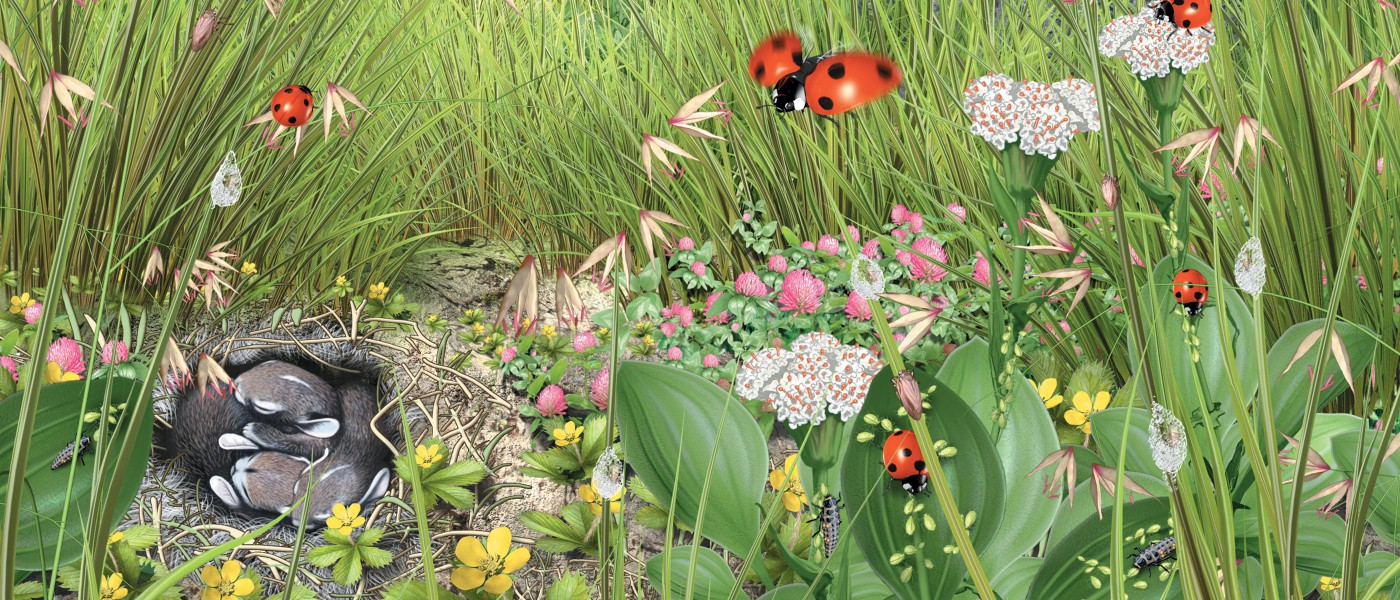The Kid’s Guide to Exploring Nature
Created by Brooklyn Botanic Garden's expert educators, this gorgeously illustrated book teaches children how to observe environments as a naturalist does and leads them on 24 adventures that reveal the complex ecosystems of plants and animals in the woods, at the beach, and in a city park. Dozens of fun projects include keeping a journal, conducting field experiments, and looking for the signs of the seasons. Detailed, scientifically based drawings help young naturalists identify hundreds of North American plants and animals while the explore nature with all five senses.
- How to Be a Nature Explorer
- Exploring Spring
-
- Spring Wildflowers
- Field Biologist
- Vernal Ponds
- Babies and Nests
- Pigeons
- Bird Migration
- Rocks
- Nature Educator
- Exploring Summer
-
- Water Surface
- Smelly Defenses
- Night Life
- Street Trees
- Woodland Edge
- Symbiotic Relationships
- Taxonomist
- Bees
- Woodland Edge
- Weeds
- Adaptations
- Meadow Grasses
- Exploring Autumn
-
- Leaf Color
- Ferns
- Tree Fruit
- Horticulturist
- Fungi
- Clues in the Forest
- Exploring Winter
-
- Life Under Ice
- Bark
- Botanical Illustrator
- Winter Survival
- Tree Buds
- Glossary of Natural Science Terms
How to be a Nature Explorer
A naturalist is a scientist who studies nature. Start looking at the world through a naturalist’s eyes, and you will be amazed at what you learn.
A naturalist studies living things by observing them and then tries to discover how they relate to each other and their environment. In earlier times, before there were many professional scientists, most of what was known about life on earth was discovered by naturalists. Today, being a naturalist takes many different forms. Field biologists, environmental educators, and scientific illustrators are all modern naturalists. You can be one too! The chapters in this book will get you started. So will these tips.
Be quiet and still sometimes. Slow down and use your senses to listen, look, smell, and feel what’s around you.
Find a sit spot. Choose a place outside that you can return to over and over again and observe. Notice how it changes throughout the day and throughout the year. Do you hear the same birds in the morning and in the afternoon? What flowers are blooming in April? In June?
Make comparisons. You are sure to see differences as you explore. How does the forest change as you hike higher up a mountain? How is one tree’s bark different from another’s? How do bumble bees look different from honey bees and sweat bees?
Ask questions. When you observe closely, you are sure to notice a lot of cool or unusual things: Birds with knife-shaped bills, flowers that look like bells, trees that smell like root beer. Why would that plant or animal have that trait? Does that shape, color, or smell help it in some way? Does it help it make or find food? Reproduce? Ward off predators?
Keep a journal. Buy a sturdy composition book or journal to record what you observe. On the next page—and throughout this book— you will see examples of the kinds of details you can record in your journal. Use some of the scientific words you’ll see in boldface throughout this book. They are defined in the glossary.


